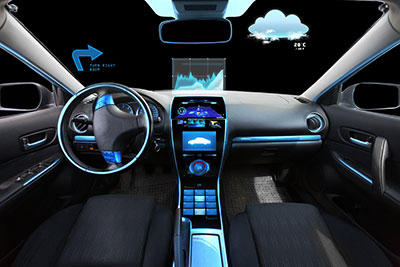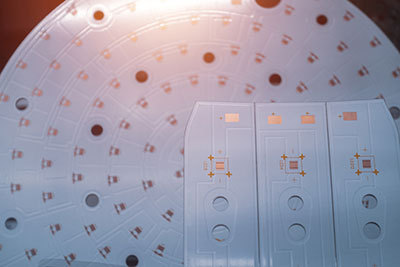Why are AAA batteries so popular for portable electronics? Are they different from the other battery sizes, such as double A lithium batteries?
Do high-quality Triple-A batteries guarantee a reliable power supply?
This is your article if you have queries similar to those we highlighted. We'll bring you the intricate details of these household batteries and their application in everyday electronics.
Let's start.
Contents
- What Are AAA Batteries?
- Technical Specifications Of The AAA Battery
- The Different Types of AAA Batteries
- Non-Rechargeable AAA Batteries
- Secondary AAA Batteries
- What Is The AAA Battery Equivalent?
- What Are AAA Batteries Used For?
- How To Install AAA Batteries In Your Device
- Differences Between AA and AAA Batteries
- Size
- Capacity
- Battery Use
- How to Use AAA Batteries in Place of AA
- Summary
What Are AAA Batteries?
First, what are they, and what makes them outstanding over other dozens of batteries such as AA, C, 9-Volt Battery, and D?
AAA batteries are small-size batteries measuring 10.5mm and 44.5 mm in diameter and length, respectively.
Thus, the term AAA encapsulates any battery from any brand with these dimensions.
While the size is constant, other aspects, such as their voltages and weight, can vary depending on the manufacturer's specifications.
Among the most renowned brands include:
- Energizer Max AAA Batteries
- Energizer AAA
- Duracell AAA
- Duracell Power
- Duracell AAA Nimh Battery
- Duracell Optimum Aaa Alkaline Battery
- Duracell Coppertop Aaa Alkaline Battery
- Atomic AAA
- Toshiba AAA
Also, their composition is varied, and they can be anything from alkaline Nimh AAA batteries to lithium batteries.
Technical Specifications Of The AAA Battery

An AAA Battery.
One of the most unique features of AAA batteries is their size. They are small, especially when compared to the AA types.
However, they are larger than the relatively small AAAA batteries.
Identifying them could be quite a hassle if no system was in place to highlight their fundamental features.
So bodies like the American National Standards Institute and the International Electrochemical Association dictate their basic elements.
The table below provides the respective battery specifications of the various common types of AAA batteries.
| Type of AAA battery | Voltage Rating | Battery Capacity | Single Use or Rechargeable | Battery Chemistry |
| Lithium Iron Disulfide | 1.5V | 1100 to 1300mAh | Single-Use | Lithium iron disulfide (LiFeS2) |
| Alkaline | 1.5V | 850 to 1200mAh | Single-Use | Manganese dioxide (MnO2) |
| Nickel Metal Hydride | 1.2V | 600 to 1300mAh | Rechargeable | Nickel metal hydride or Nickel (II) hydroxide |
| Nickel oxyhydroxide | 1.7V | 300 to 600mAh | Single-Use | Nickel oxyhydroxide (NiO(OH)) |
| Nickel Cadmium | 1.2V | 300 to 500mAh | Rechargeable | Nickel Cadmium (NiCd) |
The Different Types of AAA Batteries
Non-Rechargeable AAA Batteries

Single-use AAA batteries.
We have four main subcategories of non-rechargeable AAA batteries.
Carbon-Zinc Battery
They are among the commonest non-rechargeable AAA batteries, primarily renowned for their zinc and carbon electrodes.
Another remarkable characteristic of these cell batteries is their relatively low battery capacity.
With about 500 mAh capacity, it's the battery suitable for low-power drain devices like remote controllers and wall clocks.
The Carbon-Zinc battery quickly depletes, so you have to replace them after some time, although they are cheap.
Alkaline
It can be daunting to differentiate the Alkaline batteries from the carbon battery we discussed above.
They both have similar chemistry involving manganese dioxide and zinc chemical reactions.
Nonetheless, while the Zinc-Carbon features zinc chloride or ammonium electrolyte, Alkaline cells have alkaline potassium hydroxide electrolyte.
The capacity of the alkaline cells is better than that of their Zinc-carbon counterparts.
Although both have the same nominal voltage of 1.5V, alkaline cells feature a capacity of between 850 and 1,200 mAh.
So they're more long-lasting.
Nickel Oxyhydroxide
They have manganese dioxide and nickel oxyhydroxide electrolytes responsible for their relatively high nominal voltage of 1.7V.
Their energy densities are remarkably high, which explains their popularity in devices that require quite a lot of power, such as cameras.
Lithium Iron Disulfide
Here's a quick glimpse of the chemical composition of these batteries.
- Anode: Lithium
- Cathode: iron disulfide
- Electrolyte: A Lithium salt.
Their nominal voltage is 1.5 V, which can rise to 1.8V in open circuits. Their battery capacities are also remarkably high, at 1,200 mAh.
This is why digital cameras and other high-power drawing applications use these types of batteries.
Also, they are the ultimate Long-Lasting Digital Camera Battery type. They have extensive battery life in low-energy applications like clocks.
Thus, they are the most long-lasting batteries in this category.
Secondary AAA Batteries

Rechargeable AAA batteries.
Nickel Cadmium
They are rechargeable batteries, having existed for the most prolonged duration.
The standout feature of these AAA batteries is their low nominal voltage of 1.2V.
Their capacity is also among the lowest in rechargeable batteries at 300 to 500 mAh.
But they have some serious downsides, such as being highly toxic. Their self-discharge rate is so high, meaning they deplete pretty fast.
Therefore, manufacturers have limited their production. So there are almost none left in the market.
Nickel Metal-Hydride
Here now are the improved versions of the Nickel Cadmium batteries. Their nominal voltage is similar to Nickel Cadmium AAA batteries.
But their capacity is higher at 600 to 1300 mAh. Also, they don't have the toxic heavy metal cadmium.
Instead, these AAA batteries feature a metal hydride, meaning you don't need extra precautions when disposing of them.
This composition also ensures they have improved stability over the former Nickel Cadmium cells.
Lithium-Ion
The other common name for these batteries is Lithium 10440 due to their 10 mm and 44 mm diameters and lengths, respectively.
They are not true AAA batteries. But their dimensions are so close to typical AAAs that we treat them identically.
Among the standout difference of these batteries from the standard AAA is that they have a very high nominal voltage of 3.7V.
The average rating for AAA batteries is 1.5V meaning that the Lithium 10440s are best suited for high-voltage devices.
Their capacity ranges between 350 and 600 mAh.
Special Offer: Get $100 off your order!
Email [email protected] to get started!
What Is The AAA Battery Equivalent?

AAA battery equivalents.
As we highlighted earlier, there are numerous worldwide AAA battery manufacturers.
It means we have variations in the chemistry and brand names of AAA-size batteries.
Hence, checking out the equivalents is the best way to know if a battery you're dealing with is fundamentally an AAA.
If you encounter batteries with these codes, just know you're dealing with AAAs.
- HP16
- Type 286
- L92BP Battery
- MN2400
- LR03
- MV2400
- 24D
- KR03
- UM 4
- ZR03
- 24A
- 24LF
- R03
- U16
- FR03
- HR03
- MX2400
Knowing the best AAA battery for your application could be daunting with these variations.
Always refer to the user manual of the device before buying a battery.
It states the battery's specifications, composition, chemistry, nominal voltage and capacity.
What Are AAA Batteries Used For?

Aaa Batteries - Alkaline Battery in a USB charger device.
Most of your favorite devices use AAA batteries primarily because of their excellent performance, stability and relatively small size.
So you're likely to find them in everyday devices such as:
- High-powered toys
- Battery Flashlights
- Battery Service Vehicles
- Portable Laser level components like pens
- Smoke detectors
- Wireless mouse
- Memory backup
- Medical Devices and Instruments
- Digital Thermometer
- Calculators
- Security System Panel
There are other power applications of AAA batteries, as almost all small devices requiring a Lightweight Power Source use them.
How To Install AAA Batteries In Your Device

An AAA battery holder for Devices with batteries.
Battery installation is simple. Ensure you perfectly fit them on the holder while considering the polarities.
Follow the following steps to fix the AAA battery for your favorite devices.
- First, identify the positive and the negative terminals of the batteries. Usually, the negative end is flat, while the positive terminal has a protrusion resembling a cross. On your device, the makeup will be the opposite. The negative terminal will have a spring where the battery's flat end fits in, while the positive terminal is flat.
- Next, gently fit the battery into the device's cage while not damaging the protrusions on the device, as this may result in dysfunction.
Differences Between AA and AAA Batteries

AA battery icon.
Size
Say you have two batteries of different sizes, and you don't know which is AA or AAA.
First, check out the smaller one; It's probably the AAA battery. The thin profile makes it a perfect fit for small portable devices.
Capacity
The battery milliamp-Hour capacity can help you distinguish AA from AAA batteries.
AA battery capacities range between 2000 to 3000mAh, while AAA models range between 350 to 1200mAh.
Picking a battery with a suitable capacity guarantees the optimal performance of your device.
Battery Use
AAA battery have a relatively lower nominal voltage and capacity than AAs. So they are best suited to low-power use applications.
Toy batteries will likely be AAA, while radios will use Powerful Batteries like AA batteries. These devices require more capacity and voltage.
How to Use AAA Batteries in Place of AA

Replacement batteries.
Avoid a day without batteries by following this simple hack on replacing depleted AAs with AAA batteries.
How do you fit a small-size AAA into a slot designed for the larger AA as an emergency battery?
Simply add an aluminum foil on one end of the slot to ensure the small backup batteries fit perfectly on the holder.
The battery will supply power to the device despite being of small size because aluminum is an electricity conductor.
Nonetheless, this solution doesn't provide long-lasting power because AAA batteries cannot last as long as AAs.
But if your AAA battery has the same nominal voltage as the AAs, they seamlessly power the device.
Summary
There are various applications for AAA battery, as we have highlighted in our guide.
But the most important thing is picking up the best battery rating depending on your device.
Also, we recommend rechargeable batteries such as the Nickel metal-hydrides and Lithium-Ion types for long-term service.
For more, reach out to us anytime.
Special Offer: Get $100 off your order!
Email [email protected] to get started!







